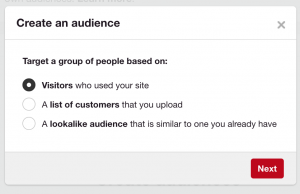There was once a time when companies could only see the negative side of social media and as a result many banned the use of it within company hours. However, in more recent years I have witnessed companies becoming increasingly savvy about how to leverage the potential benefits of their employees’ extensive social networks. I have worked with several clients (ranging from blue chip multinationals to smaller more boutique affairs) on how to do just that. Today I want to share with you the ins and outs of implementing your own company-wide social media advocacy program.
How it works:
Every business is different, so one size will not fit all, but programs that I have been involved in looked roughly like this…
- Company X decide they would benefit from starting a regular blog on their website. (There are numerous, well documented reasons for this that I won’t go into here.)
- Employees are asked if they would be keen to contribute to the writing of the company blog. They are also asked to share related social posts on their own social media channels.
- To help encourage contributors to get involved, company X explains the benefits of taking part. These range from being seen as a thought leader within their industry, to furthering their subject matter knowledge through the researching and writing of blogs.
- A blog schedule is created and shared with all of the contributors. This clarifies when blogs are due to go live, who is writing them and any approval systems/ advance deadlines that are required. Generally, one person is appointed as chief organiser and they keep the schedule updated. It can be handy if the schedule is created on a google doc which all contributors can access. This means there is only ever one live version of the schedule, thus reducing potential confusion.
- Contributors are given training on uploading their blogs using whichever CMS system the company uses, or one person is selected to be responsible for the uploading of all the blogs. Contributors are also trained on what makes a good blog, the objectives of the blog strategy and how to write a selection of related social posts to accompany their blog. The posts can be tailored to fit the social channels that will be used to promote the blog.
- Once the program is rolling and blogs are being published on a regular basis, the accompanying social posts are shared with the employees who are part of the program – usually using a distribution email. They are asked to publish the social post on their personal social channels to promote the new blog.
- Depending on the level of sophistication of the program, tracking links for each social channel and each blog can be created which means the traffic from each channel can be measured and used to tweak the strategy moving forward.
There are many benefits to running a social media advocacy program like this. You can widen your reach, strengthen your company offering, increase employee buy-in to the company, not to mention drive leads to your website. However, before embarking on a program like this, you should first consider the impact it could have on your resources. Writing a well informed and interesting blog can take time to research and put together and this will vary for each employee. Additionally, your employees will have a legitimate reason to be on Twitter or LinkedIn within staff hours, so you’d better make sure that you are happy with this idea before rolling the program out!
If you decide to implement a program like this, we’d love to hear how you get on and we are always here to lend a hand if need be.
Digital & Social Articles on Business 2 Community(29)






